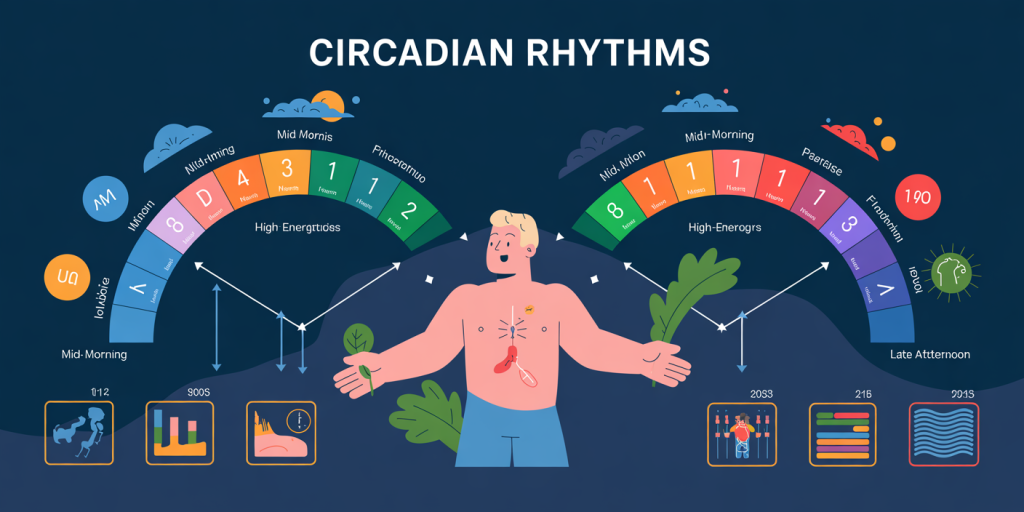Understanding Your Energy Peaks for Better Productivity
Effective productivity is closely tied to how well you manage your natural energy fluctuations throughout the day. Everyone experiences periods of high and low energy, often referred to as energy peaks and troughs. Recognizing and leveraging these peaks can significantly enhance your efficiency, creativity, and overall work performance. This article explores the science behind energy rhythms, offers practical techniques to identify your personal energy patterns, and provides actionable strategies for harnessing your energy peaks to optimize productivity.
The Science Behind Energy Rhythms
Human beings are governed by biological rhythms, also known as circadian rhythms, which regulate sleep-wake cycles, hormone release, and body temperature fluctuations. These rhythms influence cognitive functions such as alertness, focus, and memory, making certain times of the day more conducive to productive work than others. According to the National Institute of General Medical Sciences, circadian rhythms regulate many physiological processes, establishing predictable peaks and valleys in energy levels (NIGMS, 2021).

Research indicates that most people experience a natural energy peak in the mid-morning hours, typically between 9 AM and 12 PM, followed by a post-lunch dip around 1-3 PM. A secondary, smaller peak often emerges in the late afternoon, between 5 PM and 7 PM. However, these patterns vary significantly between individuals due to genetic factors, lifestyle, and sleep habits (Monk, 2015). Understanding your own unique energy cycle is crucial to tailoring your work schedule for maximum productivity.
Identifying Your Personal Energy Peaks
Monitoring your energy levels throughout the day is the first step to identifying your productivity peaks. Keep a detailed energy diary for at least a week, rating your energy and focus on a scale of 1 to 10 every hour. Note the specific tasks you perform, your mood, and any external factors such as meals or caffeine intake. Over time, patterns will emerge that reveal when you are most alert and creative.
For example, Angela, a marketing executive, discovered through tracking her daily rhythms that her highest energy levels occurred between 10 AM and noon. Consequently, she started scheduling strategic planning sessions during this window, reserving routine email responses for early afternoon when she felt less focused. This adjustment resulted in a 25% increase in her work output within a month.
Additionally, modern technology offers multiple solutions to support this self-study. Apps like RescueTime and Moment can track your computer and phone usage, highlighting periods of intense activity and distraction. Wearables such as Fitbit or Oura Ring collect biometric data (heart rate variability, sleep quality) that correlate with energy and alertness, enabling a comprehensive understanding of your personal energy cycle.
Aligning Tasks with Energy Levels for Efficiency
Once you identify your energy peaks and troughs, task alignment becomes a powerful productivity tool. High-energy periods are ideal for tasks requiring deep focus, creativity, and complex problem-solving. Low-energy periods, on the other hand, are better suited for routine or administrative tasks that demand less cognitive effort.
Consider a software developer named Carlos who found his peak focus was in the early morning, from 7 AM to 9 AM. Recognizing this, Carlos dedicated these hours to coding and debugging, activities requiring intense concentration. In contrast, he scheduled meetings, code reviews, and email correspondence for late afternoon when his energy waned but he could still engage socially and manage less demanding work.
The key lies in categorizing your work by cognitive demand and matching those categories with your natural energy fluctuations. The following comparative table illustrates how different types of tasks align with energy levels:
| Energy Level | Suitable Tasks | Unsuitable Tasks |
|---|---|---|
| High Energy Peaks | Strategic planning, creative work, problem-solving | Checking emails, data entry |
| Moderate Energy | Collaborative meetings, reviewing work | Deep analytical tasks |
| Low Energy Troughs | Routine administration, filing, scheduling | Creative brainstorming |
A Harvard Business Review study underscores that employees allowed to schedule cognitively demanding tasks during their identified peak times showed a 16% increase in productivity compared to those who worked without aligning tasks to energy levels (Csikszentmihalyi, 2018).

The Role of Nutrition, Sleep, and Breaks in Energy Management
Energy peaks are not fixed; they are influenced by lifestyle factors such as sleep quality, nutrition, and rest intervals. Poor sleep undermines the body’s ability to sustain high energy, resulting in erratic peaks and increased fatigue. The Centers for Disease Control and Prevention (CDC) reports that adults who sleep less than 7 hours per night are twice as likely to report low productivity due to daytime fatigue (CDC, 2020).
Nutrition also plays a critical role. Consuming balanced meals with complex carbohydrates, lean proteins, and healthy fats supports sustained energy release, while excessive sugar or caffeine can cause spikes followed by crashes, disrupting energy rhythms. Incorporating small, frequent meals and hydrating regularly help maintain steady energy levels.
Regular breaks during work periods have been proven to prevent mental fatigue. The Pomodoro Technique, involving 25 minutes of focused work followed by a 5-minute break, aligns closely with natural concentration spans. Psychological research highlights that strategic breaks contribute to mental restoration, allowing individuals to return to tasks refreshed, thus optimizing their energy peaks (Trougakos et al., 2015).
Overcoming Common Barriers to Utilizing Energy Peaks
Many individuals struggle to capitalize on their energy peaks due to workplace constraints, poor awareness, or ingrained habits. Fixed office hours and meetings scheduled during peak energy windows can prevent optimal task alignment. Additionally, multitasking and constant distractions degrade focus, flattening the productivity curve.
Time management tools and clear communication can help mitigate these barriers. Employees can negotiate “no meeting” blocks during their most productive hours and use tools like calendar scheduling software (e.g., Google Calendar, Microsoft Outlook) to protect these slots. Techniques such as turning off notifications or using website blockers during peak work times help minimize interruptions.
A real-world example is found at a software company where project teams adopted “focus hours” from 9 AM to 11 AM, during which all meetings were banned. Employee surveys reported a 30% reduction in multitasking and a notable improvement in task completion rates and satisfaction (Tech Workforce Report, 2022).
Looking Ahead: The Future of Personalized Productivity
The future of productivity lies in personalized, data-driven approaches that integrate biological insights with technology. Advances in wearable tech and artificial intelligence are enabling real-time monitoring and prediction of energy levels, allowing dynamic scheduling suggestions tailored to individual users.

Imagine a scenario where your smart device automatically adjusts your calendar based on your detected alertness and stress levels, suggesting optimal times for creative work, meetings, or rest. Such systems could also integrate environmental factors like light exposure and temperature to further fine-tune productivity windows.
Research in chronobiology and workplace psychology is also uncovering how flexible work environments and asynchronous schedules that honor employee energy cycles lead to healthier, more engaged, and productive workforces. According to a report by Deloitte (2023), companies adopting energy-based work models saw an average 20% boost in employee satisfaction and a 15% increase in productivity metrics.
In conclusion, understanding and leveraging your unique energy peaks is a vital strategy for enhancing productivity. By combining self-awareness, lifestyle management, and technological tools, individuals and organizations can unlock their full potential in an increasingly demanding and complex work environment.
